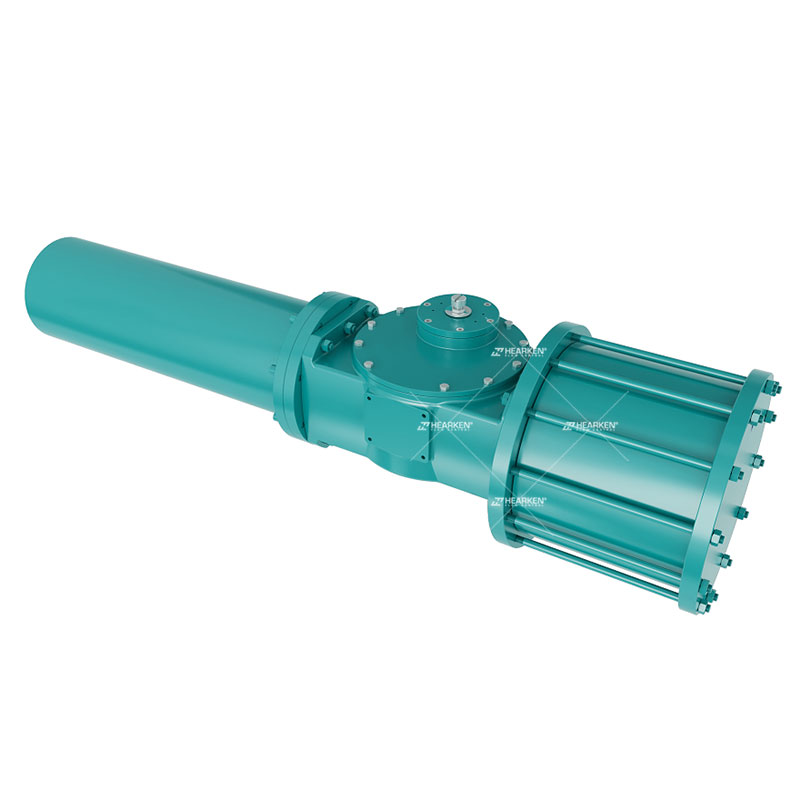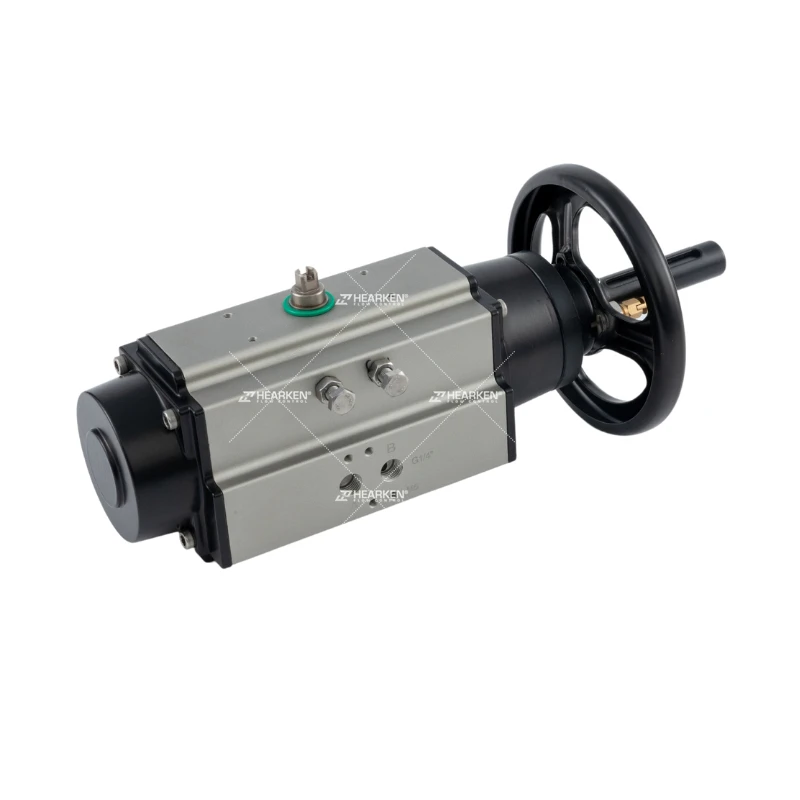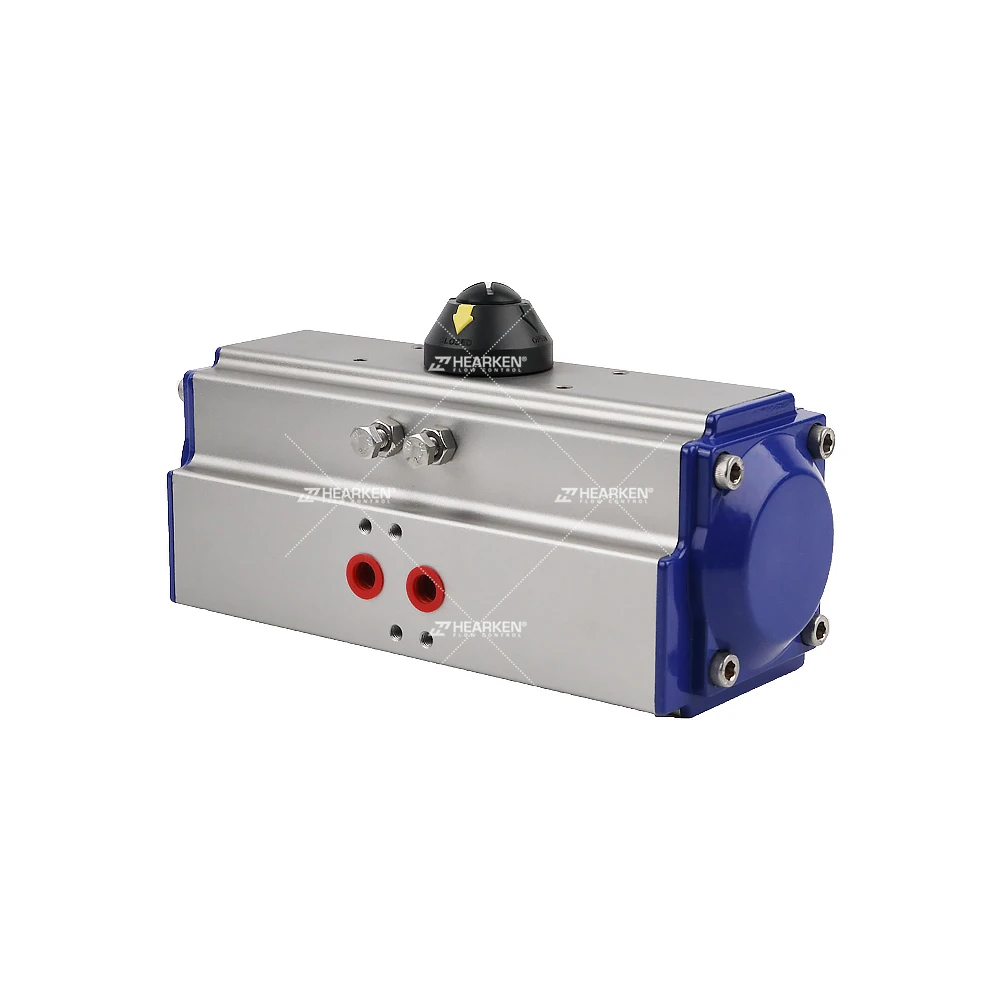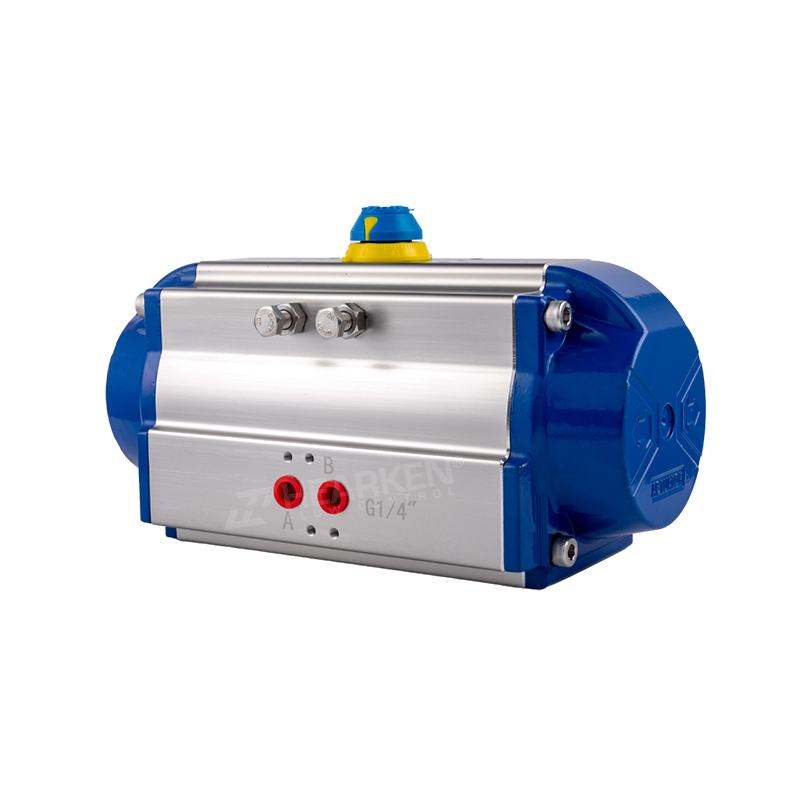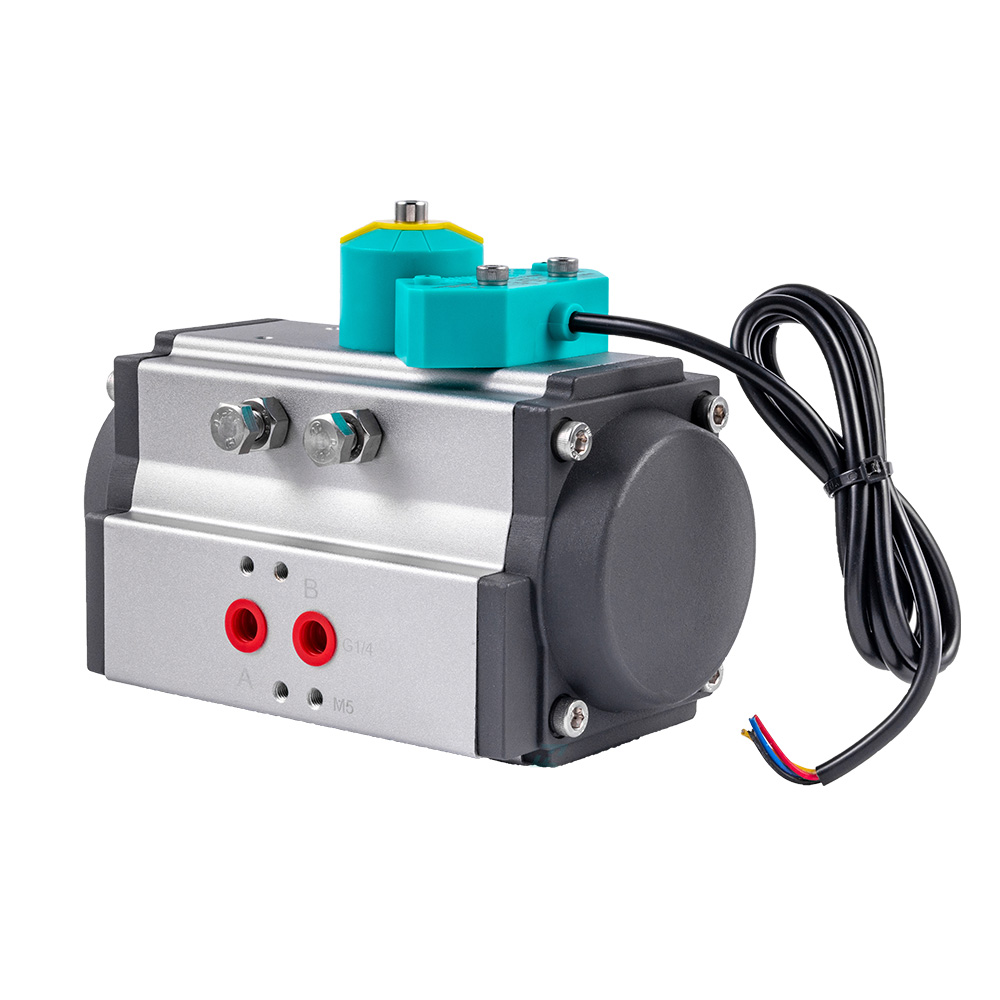Pneumatic Actuator
Heavy Duty Pneumatic Actuator
The HPA-G series shift fork actuator is built in line with the latest design solution an
HPA Rack & Pinion Pneumatic Actuator With Handwheel
Pneumatic actuator is prelubricated and tested to a min onemillion operations Actuators
Rack and Pinion Pneumatic Actuator
The cylinder body of the pneumatic actuator is made of extruded aluminum alloy and is tr
Pneumatic Actuator with Limit Switch Box
The rack-and-pinion pneumatic actuator has the advantages of simple structure, stable an
About pneumatic actuator valve
A pneumatic actuator valve is a device used to control the flow of a fluid, typically air or gas, through a system. It operates by converting the energy of compressed air into mechanical motion. This motion, in turn, either opens or closes the valve, regulating the flow of the fluid. Pneumatic actuators are widely used in various industrial applications due to their reliability, simplicity, and the ease with which they can be controlled.
What is the function of a pneumatic actuator?
There are mainly two types of pneumatic actuators used with valves:
- Linear Actuators: Move in a straight line and are typically used with gate, globe, or diaphragm valves.
- Rotary Actuators: Rotate an output shaft in a circular motion and are commonly used with ball, plug, and butterfly valves.
How does an actuator valve work?
An actuator valve is a crucial component in industrial and mechanical systems, designed to control the flow of fluids or gases through a pipeline. The actuator is the mechanism that operates the valve, and it can be powered by various energy forms, including pneumatic (air), hydraulic (fluid pressure), or electric (electric current). Here, we'll focus on the general working principle of actuator valves, highlighting the pneumatic type as an example due to its widespread use and relevance to your expertise.
Basic Working Principle
-
Signal Reception: The process begins with the actuator receiving a control signal. This signal can be manual, electrical, or pneumatic, depending on the system's design. In pneumatic actuators, the signal is often a change in air pressure.
-
Actuation Mechanism Activation: Upon receiving the signal, the actuator mechanism is activated. For pneumatic actuators, compressed air is either introduced or released from the actuator chamber.
-
Conversion of Energy into Mechanical Motion: The actuator converts the energy from the control signal into mechanical motion. In a pneumatic system, compressed air applies force to a piston or diaphragm within the actuator, creating linear or rotary motion.
-
Valve Operation: This mechanical motion is then transferred to the valve stem or mechanism, causing the valve to open, close, or modulate to a specific position. The type of motion (linear or rotary) depends on the valve design and the actuator type.
- Linear Actuators: Move in and out to push or pull the valve stem, suitable for gate, globe, or diaphragm valves.
- Rotary Actuators: Rotate a shaft or arm to turn the valve disc or ball, ideal for ball, plug, and butterfly valves.
What is the difference between a valve and an actuator?
The terms "valve" and "actuator" are often used together in the context of fluid control systems, but they refer to distinct components with different functions. Understanding the difference is crucial for anyone involved in the design, operation, or maintenance of these systems, including those in industries like yours that deal with pneumatic and electronic products.
Valve
A valve is a mechanical device that controls the flow of fluid (liquids, gases, fluidized solids, or slurries) within a system. It does this by opening, closing, or partially obstructing various passageways. Valves play a critical role in regulating system functions such as flow rate, pressure, and direction of the fluid. There are several types of valves, each designed for specific functions and operation modes, including ball valves, butterfly valves, check valves, gate valves, and globe valves, among others.
Actuator
An actuator is a mechanism or device that operates or moves another device, typically a valve. It converts control signals (which can be pneumatic, electric, or hydraulic) into mechanical motion. The actuator is the component that physically moves the valve to its desired position (open, closed, or somewhere in between), based on the control system's demands. Actuators can be classified into several types, primarily based on their source of power: pneumatic, hydraulic, or electric. Pneumatic actuators, for instance, use compressed air to generate motion, while hydraulic actuators use fluid pressure, and electric actuators use electric motors.
Key Differences
- Function: The main difference lies in their function. A valve regulates the flow of fluids by varying the size of the flow passage as directed by the control system, while an actuator is the device that moves or controls the valve based on a signal received from the control system.
- Operation: Valves can be operated manually (by a handwheel or lever, for example) or automatically (controlled by an actuator). Actuators require a source of power and a control signal to operate.
- Application: Valves are about control—determining how much material passes through them—whereas actuators are about action, the physical movement required to achieve that control.
